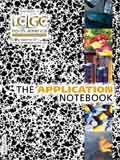"Green" Analysis of Diet Soft Drinks Containing Caffeine and Aspartame
The popularity of diet soft drinks containing aspartame requires the analysis of thousands of samples for quality control purposes each year. These analyses are typically carried out with some fraction of organic modifier in the eluent, leading to the generation of thousands of gallons of hazardous organic waste. This note shows the "green" analysis of several commercial diet soft drinks in combination with a 100% water mobile phase.
The popularity of diet soft drinks containing aspartame requires the analysis of thousands of samples for quality control purposes each year. These analyses are typically carried out with some fraction of organic modifier in the eluent, leading to the generation of thousands of gallons of hazardous organic waste. This note shows the "green" analysis of several commercial diet soft drinks in combination with a 100% water mobile phase.
The analysis of caffeine, aspartame, and benzoate from diet soft drinks is not especially challenging, as one can find this type of application in nearly every column manufacturers catalog. However, the typical conditions employed for reversed-phase separations of these compounds involves anywhere from 5%–25% organic modifier. Whether this organic component of the eluent is methanol or acetonitrile, the added handling costs associated with either recycling or disposing of the used eluent can often be a major portion of the total analysis cost.
The extraordinary chemical and thermal stability of zirconia-based stationary phases allow the chromatographer to use a wide range of mobile phases and column temperatures to develop rapid separation methods while retaining method robustness. ZirChrom®-SAX is an anion-exchange material that is built on microporous zirconia and contains a substantial amount of hydrophobic cross-linker that imparts mixed-mode ion-exchange/reversed-phase characteristics. The separation of caffeine, aspartame, and benzoate shown here in a 100% aqueous mobile phase demonstrates the capability of the mixed-mode column to separate these compounds of wide-ranging chemical properties. The 100% aqueous mobile phase containing dilute amounts of phosphate and carbonate is completely environmentally friendly, eliminating the need for costly handling and disposal of the eluent. Finally, the thermal stability of the ZirChrom®-SAX material allows the separation to be carried out at 50 °C to decrease overall analysis time.
Experimental
Samples of several commercial soft drinks were filtered with 0.45 μm filters and injected neat on a ZirChrom®-SAX column using the following conditions.
Column: 3.0 mm × 100 mm ZirChrom®-SAX
Mobile Phase: 10 mM ammonium phosphate, 5 mM ammonium carbonate, pH 6.6
Flow Rate: 1.0 mL/min.
Temperature: 50 °C
Injection Vol.: 5.0 μL
Pressure Drop: 205 bar
Detection: UV at 210 nm
The separation is shown in Figure 1. Under these conditions, the separation of caffeine, aspartame, and benzoate is achieved with good peak shape and baseline resolution, in under 4 min. Similar separations are obtained for samples of 5 different diet soft drinks indicating that this is a widely applicable method for diet soft drink analyses.

Figure 1: Analysis of several diet soft drinks. Soft drink names are trademarks of their respective manufacturers . 1 = caffeine, 2 = aspartame, 3 = benzoate.
ZirChrom columns combine the high efficiency usually associated with silica columns with complete chemical and thermal stability. Visit www.zirchrom.com for more application notes using ultra-stable, high efficiency ZirChrom columns.
ZirChrom Separations, Inc.
617 Pierce Street, Anoka, MN 55303
tel. 1-866-STABLE-1, Email: support@zirchrom.com
Website: www.zirchrom.com
















